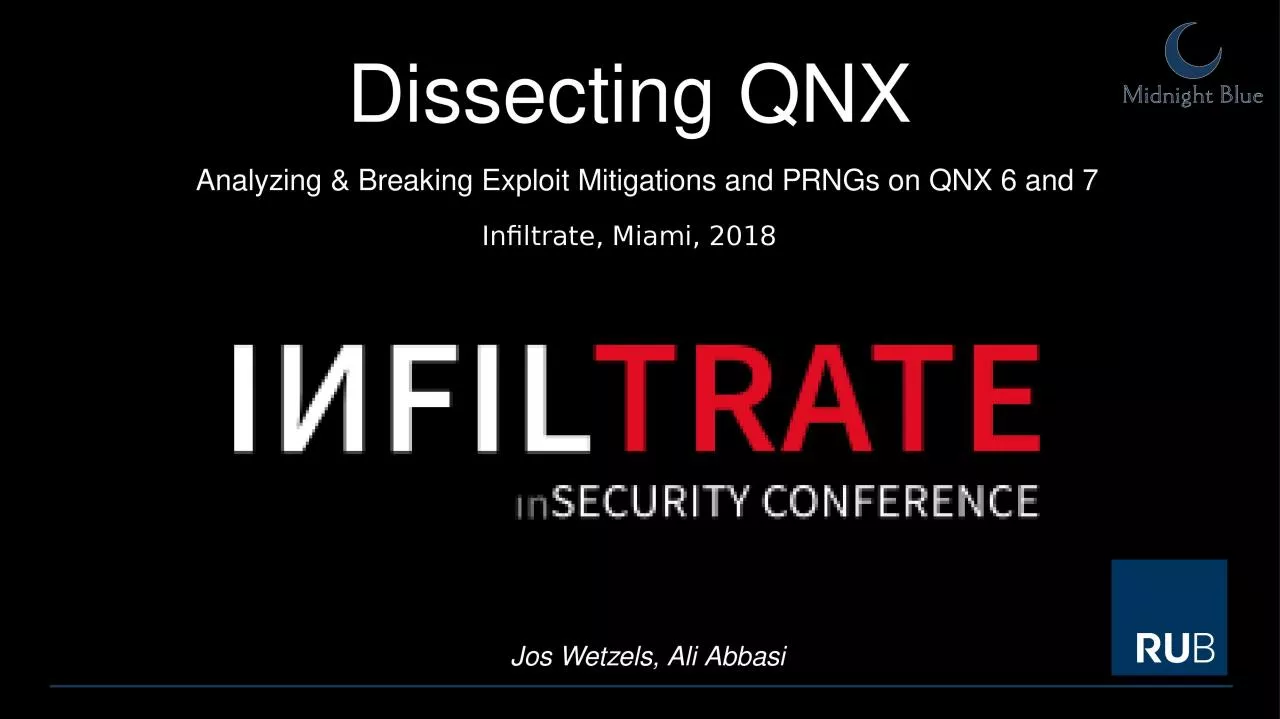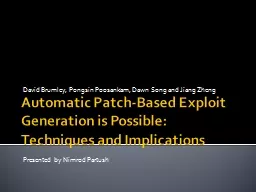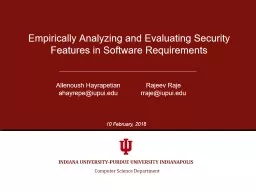PPT-Dissecting QNX Analyzing & Breaking Exploit Mitigations and PRNGs on QNX 6 and 7
Author : wilson | Published Date : 2024-02-09
Jos Wetzels Ali Abbasi Infiltrate Miami 2018 Who are we Jos Wetzels Ali Abbasi Independent Security Researcher Midnight Blue Previously Security Researcher
Presentation Embed Code
Download Presentation
Download Presentation The PPT/PDF document "Dissecting QNX Analyzing & Breaking ..." is the property of its rightful owner. Permission is granted to download and print the materials on this website for personal, non-commercial use only, and to display it on your personal computer provided you do not modify the materials and that you retain all copyright notices contained in the materials. By downloading content from our website, you accept the terms of this agreement.
Dissecting QNX Analyzing & Breaking Exploit Mitigations and PRNGs on QNX 6 and 7: Transcript
Download Rules Of Document
"Dissecting QNX Analyzing & Breaking Exploit Mitigations and PRNGs on QNX 6 and 7"The content belongs to its owner. You may download and print it for personal use, without modification, and keep all copyright notices. By downloading, you agree to these terms.
Related Documents














